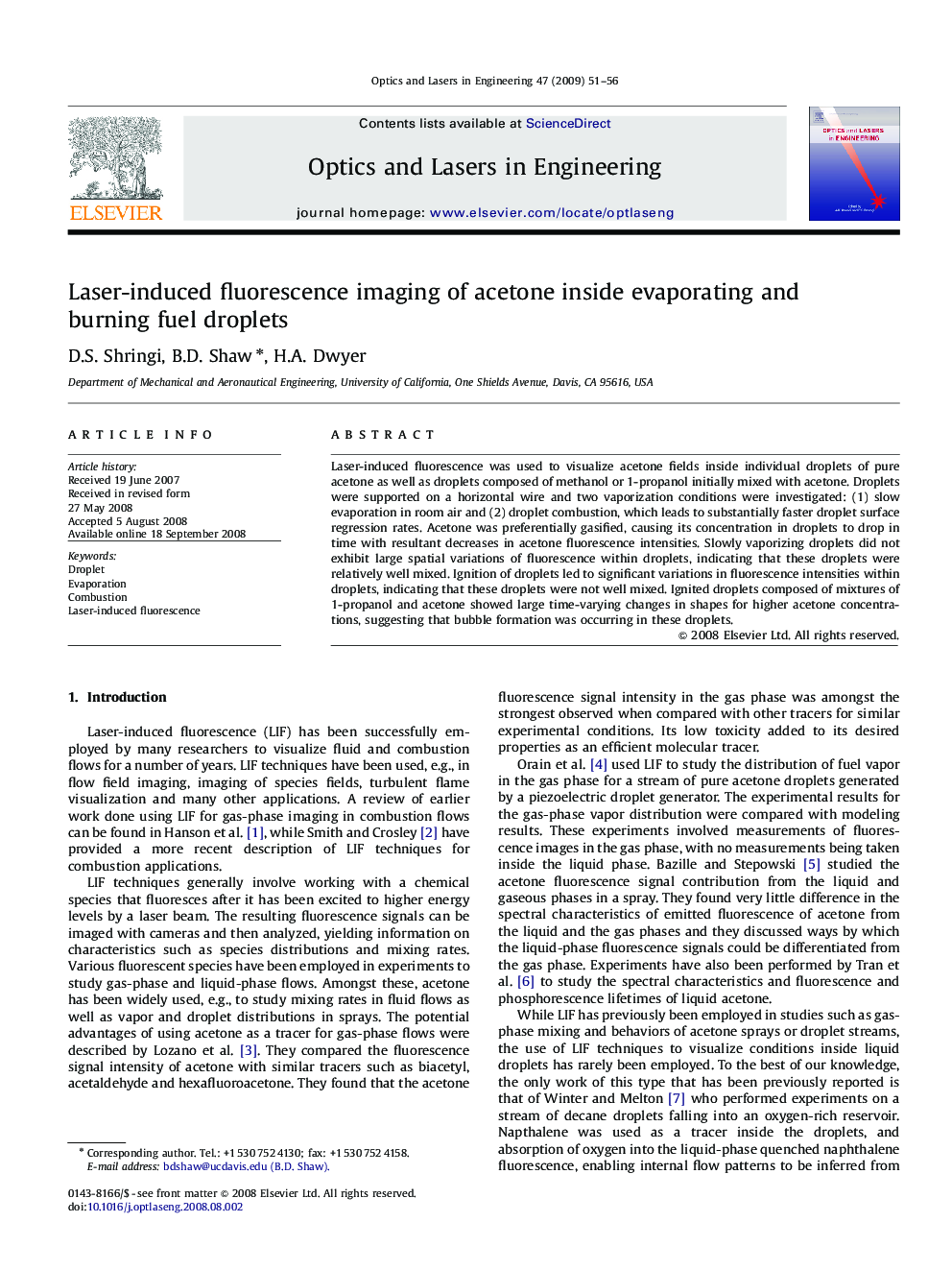| Article ID | Journal | Published Year | Pages | File Type |
|---|---|---|---|---|
| 735271 | Optics and Lasers in Engineering | 2009 | 6 Pages |
Laser-induced fluorescence was used to visualize acetone fields inside individual droplets of pure acetone as well as droplets composed of methanol or 1-propanol initially mixed with acetone. Droplets were supported on a horizontal wire and two vaporization conditions were investigated: (1) slow evaporation in room air and (2) droplet combustion, which leads to substantially faster droplet surface regression rates. Acetone was preferentially gasified, causing its concentration in droplets to drop in time with resultant decreases in acetone fluorescence intensities. Slowly vaporizing droplets did not exhibit large spatial variations of fluorescence within droplets, indicating that these droplets were relatively well mixed. Ignition of droplets led to significant variations in fluorescence intensities within droplets, indicating that these droplets were not well mixed. Ignited droplets composed of mixtures of 1-propanol and acetone showed large time-varying changes in shapes for higher acetone concentrations, suggesting that bubble formation was occurring in these droplets.
